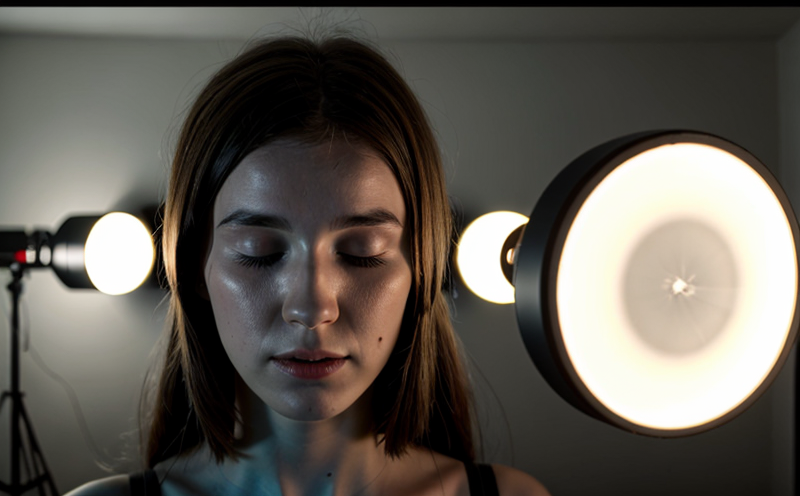IES LM 79 Flicker and Stroboscopic Testing of Solid State Lighting Products
The IES LM-79 standard is a critical tool in the evaluation of solid-state lighting (SSL) products, ensuring that they meet stringent performance requirements for flicker and stroboscopic effects. Flicker and stroboscopic effects are not only perceptible to human observers but can also pose safety risks, especially in environments where high contrast or rapid changes in light levels occur.
Flicker occurs when the brightness of a light source fluctuates rapidly enough that it becomes perceptible to the human eye. This phenomenon is particularly important in SSL products because they often have complex electronic circuits and power supplies that can introduce variability into the light output. Stroboscopic effects, on the other hand, occur when the frequency of the light source matches or closely approximates the frame rate of a visual system (e.g., a camera or eye). This synchronization can cause objects to appear to move in jerky motions or even disappear from view.
The IES LM-79 testing protocol is designed to quantify and qualify these effects, providing manufacturers with insights into how their SSL products perform under various conditions. By conducting this test, lighting designers, engineers, and quality assurance teams can ensure that their products are safe for use in all environments, from offices to industrial settings.
The testing process involves measuring the intensity of light emitted by the SSL product over time, typically using a photodiode or similar device. The data collected is then analyzed to determine the flicker index and the stroboscopic effect severity. The flicker index provides a quantitative measure of the perceived flicker, while the stroboscopic effect severity assesses how closely the light source frequency aligns with human visual perception.
The apparatus used for IES LM-79 testing includes specialized equipment capable of capturing light output data at high frequencies. This can include digital oscilloscopes and photodiode arrays. The specimen preparation involves ensuring that the SSL product is in its intended operating condition, which may involve powering it with a specific type of driver or under controlled environmental conditions.
The methodology for IES LM-79 testing is rigorous and involves multiple steps to ensure accuracy and reliability. First, the SSL product is placed in a controlled environment where temperature, humidity, and other variables can be precisely monitored and controlled. Next, the equipment used for measurement must be calibrated according to international standards such as ISO 15463-2018.
The testing process itself involves running the SSL product under various conditions that simulate real-world use cases. This may include varying the intensity of the light source, changing the frequency of power delivery, and observing the effects on flicker and stroboscopic phenomena. The data collected during these tests is then analyzed to determine compliance with IES LM-79 standards.
Compliance with IES LM-79 testing ensures that SSL products meet stringent quality control standards, which is crucial for maintaining safety and performance in various applications. For instance, in healthcare environments where high contrast lighting can be critical, flicker-free illumination is essential to prevent visual discomfort or potential accidents.
Scope and Methodology
The scope of IES LM-79 testing encompasses the evaluation of light output characteristics such as luminous flux, color rendering index (CRI), correlated color temperature (CCT), and other relevant parameters. However, the primary focus is on flicker and stroboscopic effects.
- Flicker Index Calculation: The flicker index is calculated using the formula: F = Σ(|I(t+Δt) - I(t)| / I(t)) × 100%, where I(t) represents the instantaneous luminous flux at time t, and Δt is a small interval of time.
- Stroboscopic Effect Severity: This is determined by comparing the frequency of light emission with the frame rate of human vision. If there's significant alignment between these two rates, it indicates potential stroboscopic effects.
The methodology for IES LM-79 testing involves setting up a controlled environment where the SSL product can be tested under various conditions. The equipment used includes photodiodes, oscilloscopes, and other sensors capable of capturing detailed data on light output characteristics. Calibration according to ISO 15463 is essential to ensure accurate results.
The testing process itself involves running the SSL product in a controlled environment where temperature, humidity, and other variables can be precisely monitored and recorded. The specimen preparation involves ensuring that the SSL product is in its intended operating condition, which may involve powering it with a specific type of driver or under controlled environmental conditions.
Industry Applications
| Application Area | Description |
|---|---|
| Cinematography | Flicker and stroboscopic effects can significantly impact the quality of film. IES LM-79 testing ensures that lighting equipment used in cinematography is free from flicker to maintain smooth and natural-looking motion. |
| Healthcare | In hospitals, flickering lights can cause discomfort or even exacerbate certain medical conditions. Testing SSL products for flicker helps ensure a more comfortable environment for patients and staff. |
| Education | Flicker-free lighting is essential in educational settings to prevent eye strain among students and teachers. |





